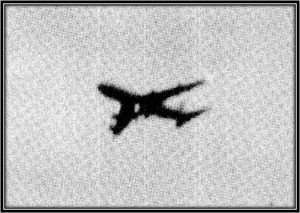On This Day in Aviation History: JAL Flight 123
Contributor: Barry Fetzer
Sources: History.com, Japan Transport Safety Board, and Wikipedia
On this day in aviation history we’ll look at one of saddest aviation events that can happen: a mass deaths event caused by a Jumbo Jet crash that takes over 500 lives.
Is there a greater nightmare then a pilot irretrievably losing control of his or her aircraft due to a catastrophic mechanical failure, battling that loss of control for a half hour, and the pilots helplessly watching as the aircraft, engaged in a “Dutch Roll”, descends uncontrollably and slams into a mountain? There may be a bigger nightmare, but I can’t think of one at the moment.
For the uninformed, “A Dutch roll in aviation is a coupled yaw and roll motion where an aircraft oscillates from side to side (yaw) while simultaneously rolling from side to side (roll), with these motions happening out of phase. This oscillatory behavior is caused by the aerodynamic interaction between the yaw and roll axes” (and was caused in JAL 123 by the loss of control input hydraulic pressure and the pilots’ inabilities to overcome the Dutch Roll and their aircraft’s descent not controllable by human control inputs.)
JAL Flight 123 crashes into Mount Otsuka
On this day in aviation history in 1985 and according to History.com and downloaded on August 12, 2025 from: https://www.history.com/this-day-in-history/august-12/jal-air-crash, “at 6:50 p.m. local time, a Japan Air Lines Boeing 747SR crashed into Mount Otsuka, 70 miles northwest of Tokyo. There were 524 people aboard, and all but four were dead by the time rescuers reached the remote crash site 12 hours later.

A photo of Japan Airlines Flight 123 flying over Okutama, from a report published by the JTSB (62-2-JA8119 Japan Airlines Co., Ltd. Boeing 747SR-100 JA8119 Ueno Village, Tano District, Gunma Prefecture) on 12 Aug 1985.
Attribution: 運輸安全委員会 (Japan Transport Safety Board) and Wikipedia.
“JAL Flight 123 took off from Tokyo’s Haneda Airport under the command of Captain Takahama at 6:12 p.m. local time. Twelve minutes into the flight, as the jumbo jet was approaching its cruising altitude, an explosion shook the aircraft. A bulkhead had blown in the tail, creating over-pressurization that severed the four sets of hydraulic-control lines and blew part of the tail section off. With a total loss of hydraulic pressure, the captain radioed he was getting no response from his controls. For the next 27 minutes, Takahama attempted unsuccessfully to regain control of the aircraft as it descended uncontrollably in a flight condition known as the “Dutch roll.” At 6:50 p.m., JAL flight 123 crashed into Mount Otsuka at a point 4,780 feet above sea level.”
Onward and upward!
Sources: History.com, Japan Transport Safety Board, and Wikipedia







